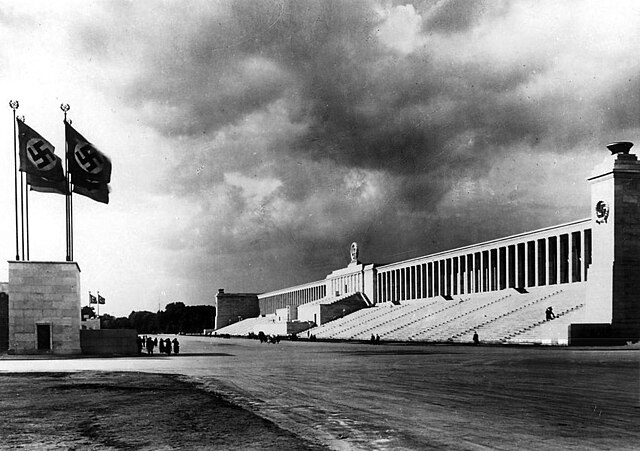Embassy of Germany, Saint Petersburg
The former Embassy of Germany in Saint Petersburg is considered the earliest and most influential example of Stripped Classicism. Designed by Peter Behrens, it was built to house the diplomatic mission of the German Empire in Saint Petersburg, the capital of the Russian Empire. After the relocation by the Bolsheviks of the Soviet capital from Petrograd to Moscow, it served as a consulate of the Weimar Republic and Nazi Germany. Located at 11/41 Saint Isaac's Square in the Tsentralny District of Saint Petersburg, the building now houses the offices of two Russian government agencies.
The Imperial German Embassy in 1913
Embassy of the German Empire before rebuilding
View of Embassy across Saint Isaac's Square
Dioskouroi sculpture before installation on the embassy building
Stripped Classicism is primarily a 20th-century classicist architectural style stripped of most or all ornamentation, frequently employed by governments while designing official buildings. It was adopted by both totalitarian and democratic regimes. The style embraces a "simplified but recognizable" classicism in its overall massing and scale while eliminating traditional decorative detailing. The orders of architecture are only hinted at or are indirectly implicated in the form and structure.
The German Imperial Embassy (designed 1911–12) on Saint Isaac's Square in Saint Petersburg is considered the key template for Stripped Classicism. It was stripped still further when the large statues originally placed on the plinth on the roof were removed during World War I
Victoria Palace, Bucharest, Romania, 1937–1944, by Duiliu Marcu
Albert Speer's Zeppelinfeld outside Nuremberg, in 1934
Folger Shakespeare Library in Washington, D.C.








